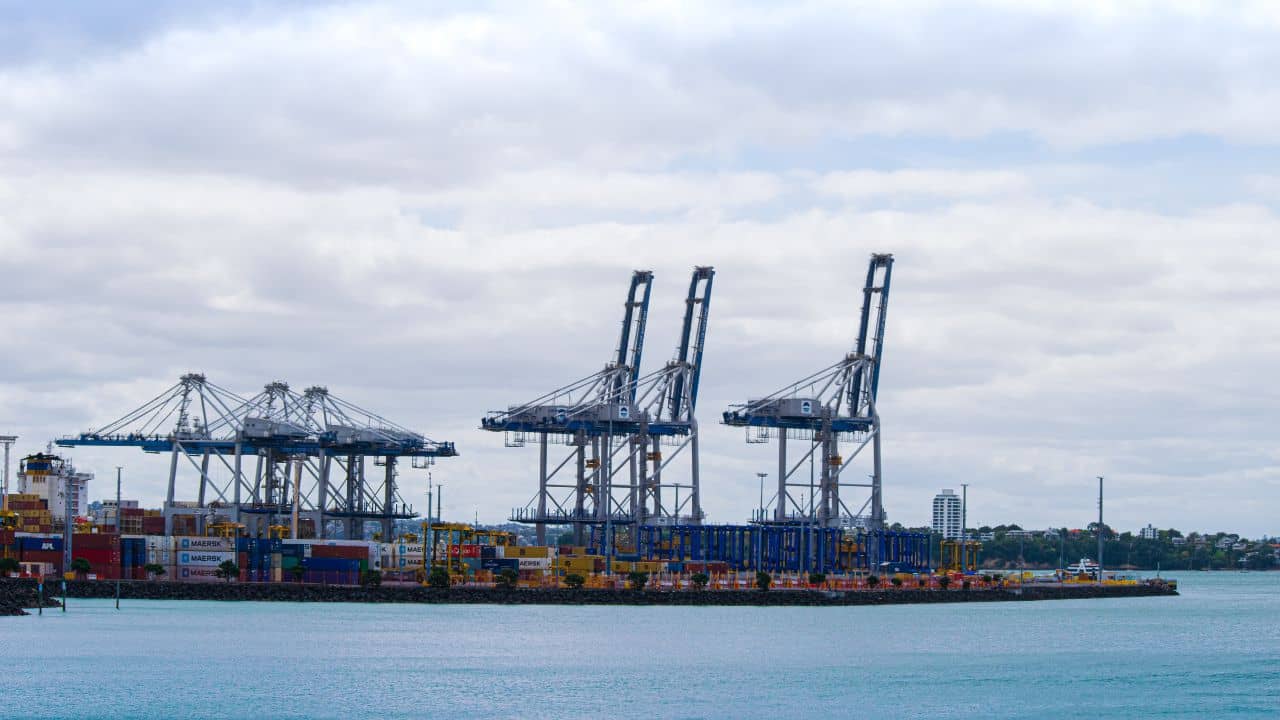
How Auckland Port Price Increases Will Affect Importers
3-minute read
The Port of Auckland has revealed a general price increase of 7% starting from January 1, 2024.
Furthermore, new surcharges for commercial port users will be implemented as of March 1, 2024.
The port’s current mission, under the leadership of CEO Roger Gray, is to position itself as “New Zealand’s premier import hub,” serving as the primary gateway for cargo into Auckland and the upper North Island.
Roger Gray emphasizes that the price increase includes an adjustment related to inflation.
Statistics New Zealand’s September quarter CPI data indicates an annualized inflation rate of 5.8%.
According to NZ Shipping Gazette, an advisory sent to port users argues that, given the port’s asset base valued at approximately $1.6 billion, it needs to generate an annual net profit of $80-$100 million to maintain and replace assets as they deteriorate.
Failing to achieve this level of profitability could potentially lead to the port’s closure, which is undesirable for such a crucial supply chain link.
To generate a fair return on investment, Mr. Gray suggests that higher increases in certain charges are necessary.
The port’s primary focus is to optimize the balance of container and cargo flows on a 24/7 operational basis.
The new pricing structure seems to employ a combination of incentives and penalties to encourage shippers to diversify their bookings within the port’s vehicle booking system.

Among the price changes is a $30 per container increase in peak season landside access fee, from $65 to $95, plus a $20 per container increase in off-peak time, raising the fee to $40.
Additionally, a $20 per TEU rail handling charge will be applied to containers beginning January 1.
From March 1, the port will introduce a landside access fee at Multi-Cargo, charged per truckload for breakbulk and bulk cargo movements.
The specific price per truck will be disclosed by November 30.
A novel charge, effective from January 1, is the $750 setup cost for a new ‘authority to work’ access permit, which is required for all businesses operating within the port operational area.
Currently, over 900 businesses have regular access to the Port of Auckland.
This new ATW access permit is designed to enhance safety by providing better visibility of shared hazards and risks across the port, strengthening compliance with joint PCBU responsibilities as required by the Health & Safety at Work Act.
Since taking on the CEO role in early 2022, against the backdrop of tragic accidents at the port, Mr Gray has consistently emphasized the paramount importance of safety within the port.
The container shipping giant Maersk is expressing dissatisfaction, as they are observing continual cost increases within the port industry, with no significant enhancements in port productivity, which ultimately raises the overall cost of servicing New Zealand.
While Maersk welcomed some of the port’s new initiatives, it continued to experience disruptions in the supply chain, including delays and restrictions on the number of container movements per call at Auckland.
According to My Therese Blank, the head of the Oceania region, to achieve its goal of becoming New Zealand’s “premium” import port, Auckland must acknowledge that productivity improvement and operational stability are crucial. They require their vessels to arrive and depart on time within the contracted berthing window.
Improved productivity would reduce the time spent at the port, create a buffer for external delays, and enhance lead times for New Zealand importers and exporters.
To position the Port of Auckland as the premium import port, Blank suggested a review of efficiency and connectivity between the terminal and the rail.
In Australia, containers can be discharged directly onto the rail, reducing handling costs, improving efficiency, and shortening supply chain lead times.
CBAFF, which represents New Zealand’s freight forwarders responsible for overseeing the transportation of customers’ goods in and out of the country, acknowledged that the price increases would affect importers, according to the organization’s CEO, Sherelle Kennelly.
However, based on CBAFF’s discussions with the port, it was apparent that “pricing adjustments” were deemed essential for the port to attain a justifiable return on its assets, and the council shared this perspective.
Kennelly mentioned that the port did not anticipate maintaining these price increases at the current level. Advice received indicated that the increases would start to level off in the coming years.
The port planned to disclose its long-term pricing changes for the next five years so customers could make informed plans.
Kennelly pointed out to the NZ Herald that the port had introduced new charges last year to encourage user bookings during off-peak times, resulting in approximately a 5% shift toward off-peak demand. The industry needed to support this shift to off-peak periods when conditions allowed.
Source: The New Zealand Shipping Gazette and NZ Herald Premium
P.S. Easy Freight Ltd helps New Zealand importers & exporters to save money on international freight and reduce mistakes by guiding how to comply with Customs and biosecurity rules.
➔ Contact us now to learn how we can assist you.
